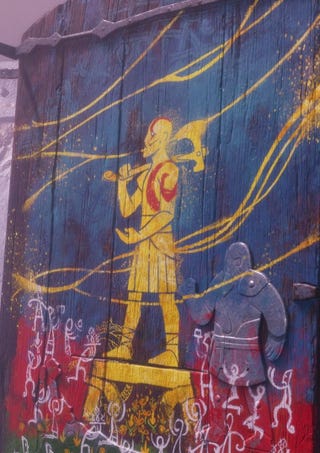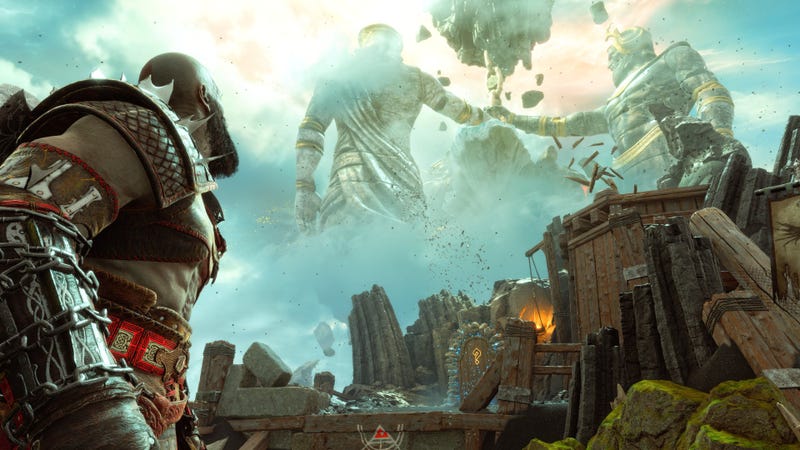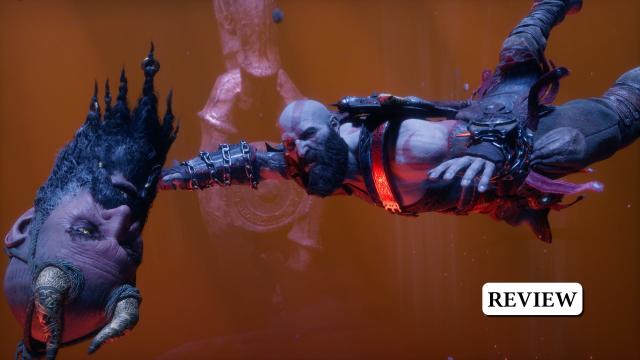God of War Ragnarök’s free DLC, Valhalla, is so good I can’t believe it’s free. While the original Ragnarök was robust and a worthy successor to the 2018 reboot, it was also a bloated attempt to wrap up a trilogy’s worth of story in one game. Valhalla, meanwhile, is such a lean encapsulation of everything Ragnarök and its predecessor do well that it’s retroactively warmed me to the sequel that once left me as cold as the frozen depths of Helheim.
Editor’s note: I didn’t feel this way about Ragnarök at all — I liked it quite a bit, and you can read the Kotaku AU review here. — David
Valhalla takes place after the events of Ragnarök, as Kratos seeks out the titular hall of heroes due to a mysterious invitation. Once inside, he finds himself faced with combat arenas built from his memories that repeat as he ascends through Valhalla. Old vistas and enemies are a decent enough framing device, and an effective way to unpack Kratos’ nearly 20 years of baggage. While the 2018 reboot used shame and fatherhood to interrogate the pornographic violence and carnage of the series’ past, Valhalla actualizes that idea without having to be tied to his relationship with his son Atreus.
Sins of the father

It’s easy to sweep the specifics of Kratos’ heinous crimes under the rug when he’s trying to hide them from everyone around him, but Valhalla is all about making Kratos say the names and look upon the faces of everyone he wronged. This is in stark contrast to Ragnarök proper, which featured an ensemble cast and a breakneck pace that often felt too crowded for its own good. God of War’s strength was in its restraint in scope. Sure, it had spectacle, but it was so precise in the story it wanted to tell that every emotional beat and relationship-altering moment got its due. Similarly, Valhalla’s storytelling strength is in its narrow focus, and it’s a reminder that the writing team at Santa Monica Studio is eager to peel back the layers of the god at its centre.
Valhalla’s structure lets Kratos dive into his past, and is an excellent showcase for Ragnarök’s best quality: its combat. Even as Kratos gets his much-needed therapy, the man is nothing if not consistent. That means his best way of working through his feelings is to pummel them and then unpack all that baggage with his friends. The loop of entering and leaving Valhalla, fighting to reach the top each time, sets the stage for a compelling roguelike that highlights all the intricacies and challenges Kratos’ arsenal holds.
Through some plot magic, Valhalla strips Kratos down to his barest parts. He’s still got his icy axe, burning Blades of Chaos, and the magical Draupnir Spear, but beyond those underlying weapon archetypes, Kratos gets Samus Aran’d and loses all the perks he (re)gained in the base game. Instead, you add upgrades, powerful runic attacks, and even challenging debuffs as you ascend through Valhalla, crafting an on-the-fly playstyle that is unique each time you face foes recreated from Kratos’ memories.

No two alike
Because of the many tools at Kratos’s disposal from the outset and Valhalla’s random rewards and upgrades, there are so many permutations for each run that I was rarely fighting the same way twice. Even as I preferred to use the Blades of Chaos for far-reaching attacks and crowd control, I would sometimes only find perks for the axe or spear, meaning I was using suboptimal weapons and abilities l for my playstyle. But the hand I was dealt forced me to experiment and get out of my comfort zone.
Read more: 12 Things To Know Before Playing God Of War Ragnarök: Valhalla
The result is one of the most engaging versions of God of War and Ragnarök’s combat we’ve seen in the rebooted franchise, which has always stood out as a strong blend of the original games’ hack-and-slash stylings and the weight of a Soulslike. Valhalla boils God of War down to its most honest form. Without Ragnarök’s narrative excess to drag it down, I regained my appreciation for how good Kratos’ kit feels as I weaved between some really challenging encounters.
Even on standard difficulty, Valhalla whooped my ass a few times thanks to its frugal use of healing items and stations. Though I gained various currencies to buy perks after each run, I constantly felt like I was scavenging for resources to buy temporary health bursts, or falling back to the beginning of a run to tweak my build to survive a difficult fight. Valhalla always feels like it’s giving me just enough to scrape by, and it makes for a thrilling challenge, especially in its escalating final boss fight that kept me on my toes at the end of each run.
Valhalla knows the parts of Ragnarök fans are jonesing to revisit a year later. Though I adore the 2018 reboot, Ragnarök devotes so much time to watching its world expand and collapse that I lost sight of why I was happy to see this dissection of Kratos’ divisive character. I imagine plenty of people will feel Valhalla lets him off too easily. But this expansion does feel like the follow-up to his story that was missing between the reboot and Ragnarök, and confirmation Santa Monica Studio still gets what made its new take on Kratos compelling in the first place.

Leave a Reply